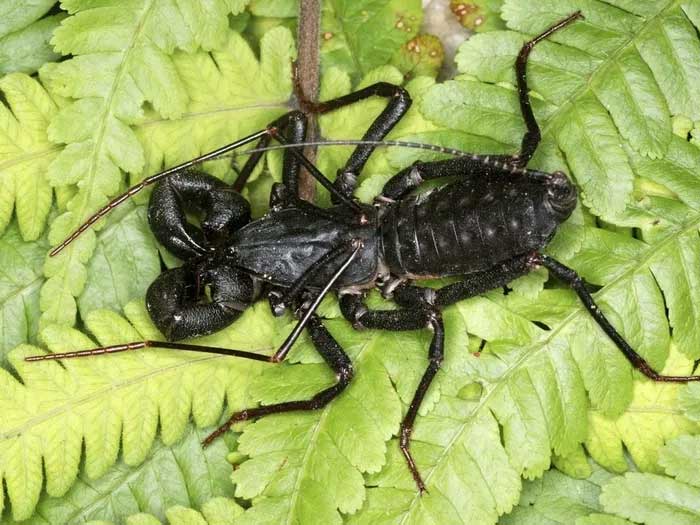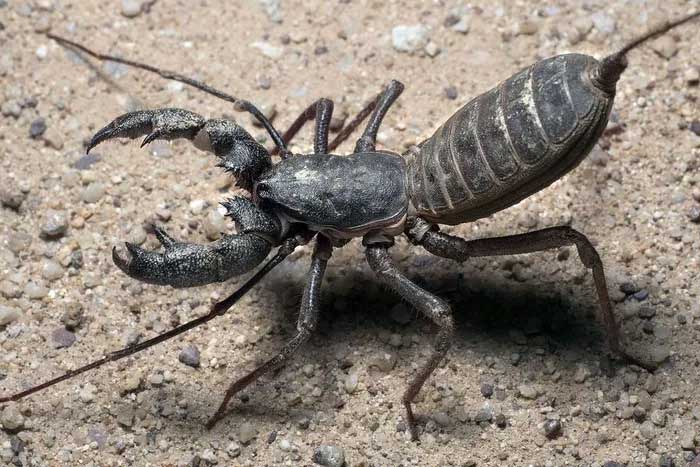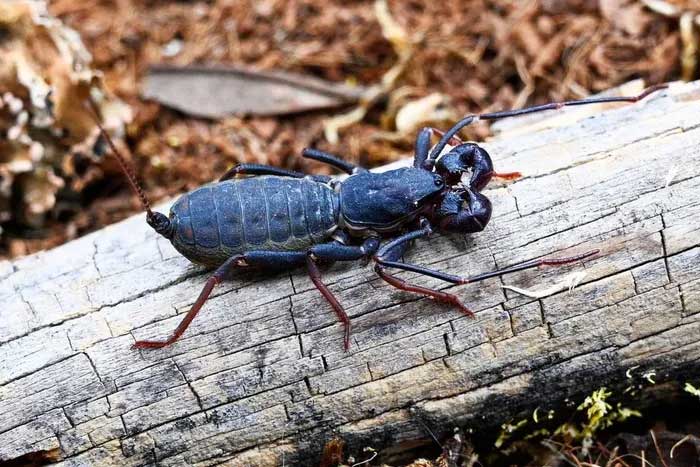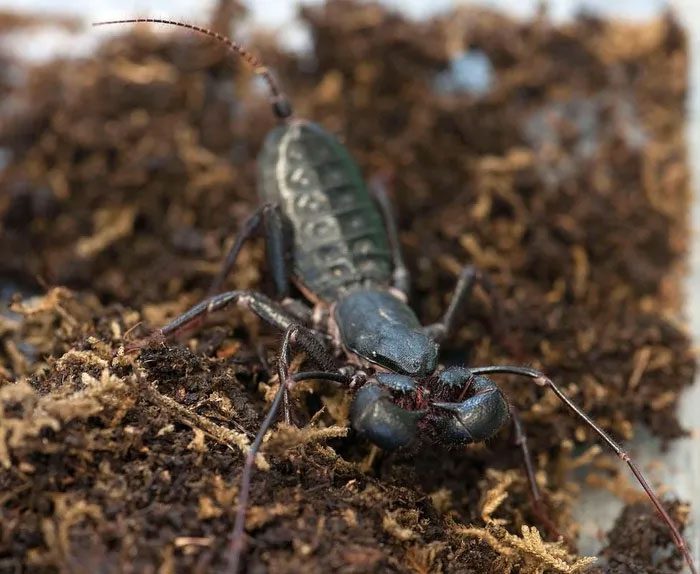Found in tropical and subtropical regions around the world, the Order Uropygi, commonly known as whip scorpions, comprises species that possess unique appearances and fascinating biological characteristics.
Adult whip scorpions can reach lengths of up to 85 mm. They bear a resemblance to true scorpions but have a slender tail resembling a whip.


Whip scorpions have large pincers similar to scorpions but with an additional large spine on the tip of each pincer.
Among their eight pairs of legs, whip scorpions use only six for movement; the first two pairs serve as sensory organs similar to antennae. They have large pincers akin to those of true scorpions, but with a prominent spine on each. Whip scorpions observe their surroundings using a pair of eyes at the front and three additional eyes on each side of their heads. This characteristic is reminiscent of common scorpion species.
Unlike true scorpions, whip scorpions lack venom glands and stingers; however, they possess glands near the rear of their abdomen that can spray a liquid composed of acetic acid and caprylic acid when threatened. The acetic acid gives the liquid a vinegar-like smell, which has led to the alternative common name of vinegaroon.
The “whip” structure of this creature is an elongated part of its exoskeleton, serving solely as a tactile organ and lacking the sting that many people mistakenly believe it has.


This type of scorpion possesses a slender tail resembling a whip.
As carnivores, whip scorpions hunt at night. They primarily feed on insects, millipedes, small scorpions, and other terrestrial arthropods. They may also consume worms, slugs, and smaller vertebrates. Their reproductive behavior is similar to that of true scorpions.
Females lay approximately 40 eggs, which hatch in a brood pouch under the mother’s abdomen, resulting in white juvenile whip scorpions that climb onto their mother’s back and cling there. Juvenile whip scorpions develop slowly, undergoing four molts over about four years before reaching maturity. They can live for an additional four years.
In the wild, whip scorpions prefer moist and dark environments; they often burrow into shelters or hide under decaying wood, stones, and other natural debris. Vietnam is home to several species of whip scorpions belonging to the genus Thelyphonus. These are commonly found in the southern region, including Ho Chi Minh City. They are not dangerous to humans and play a beneficial role in controlling harmful insect populations.


















































